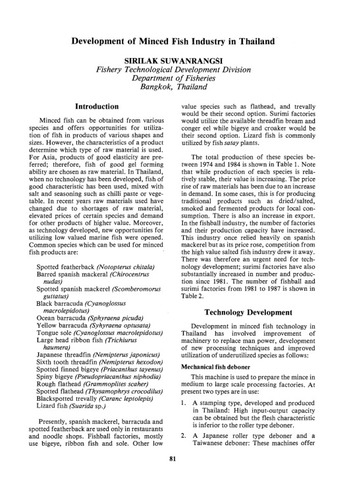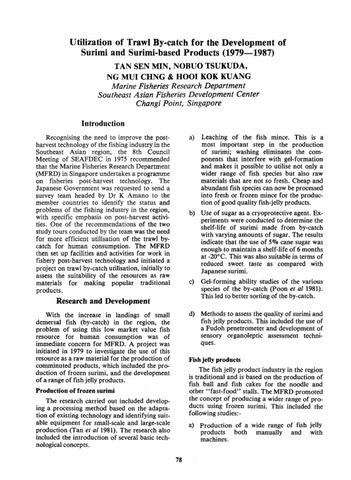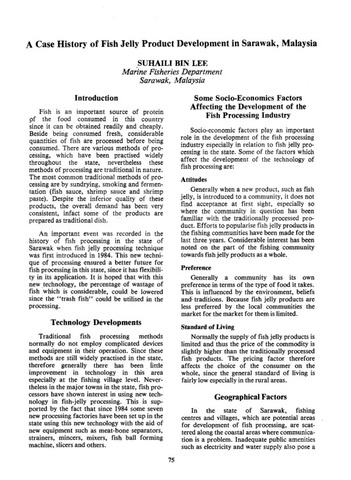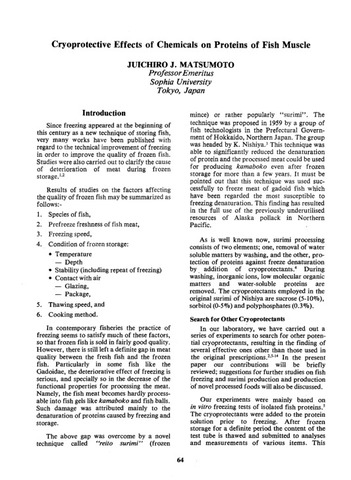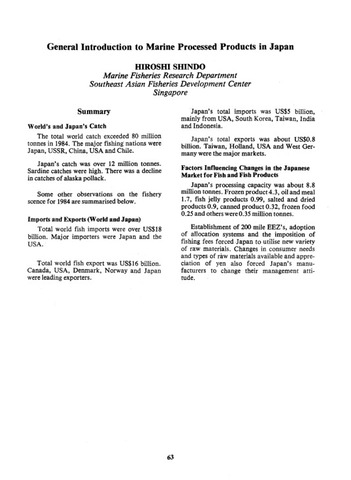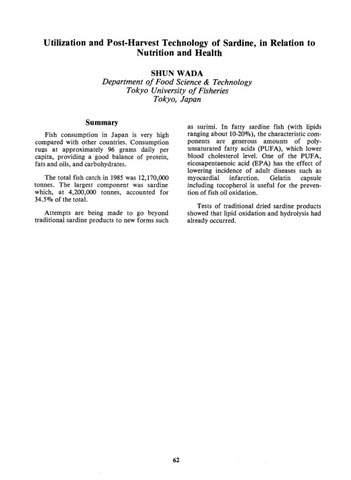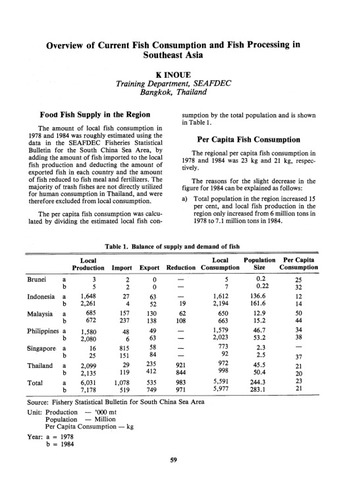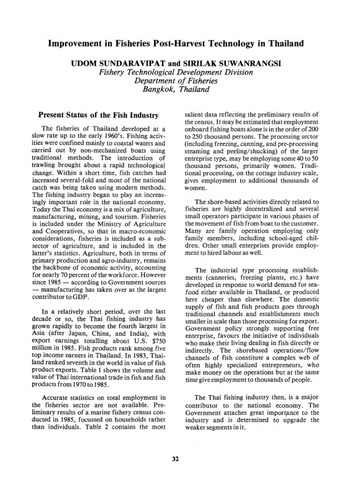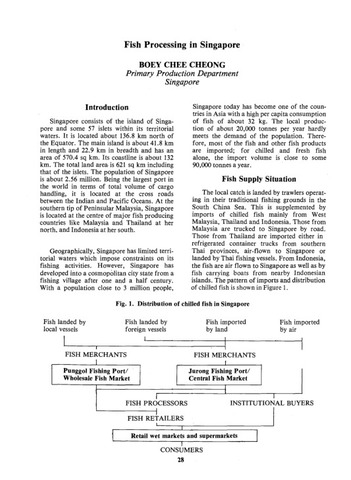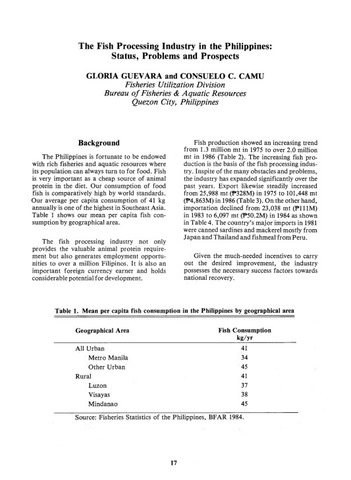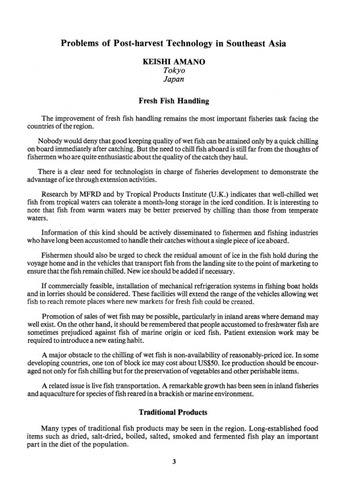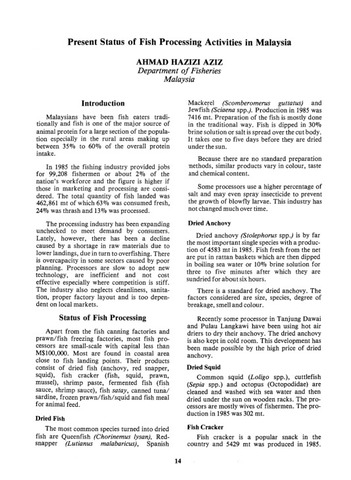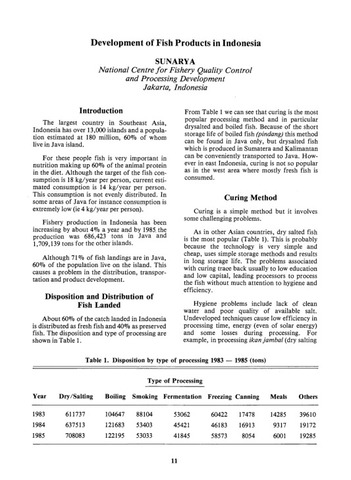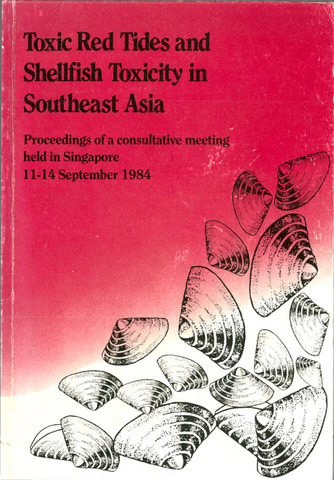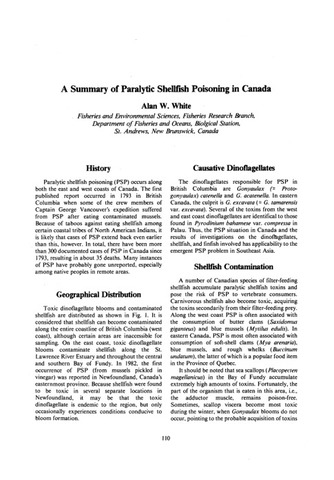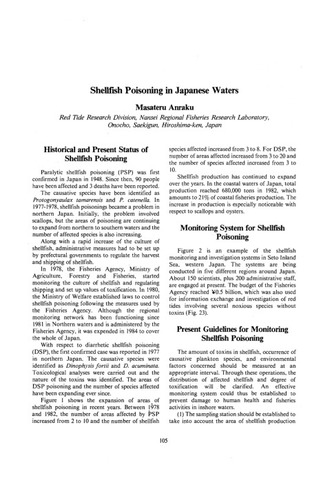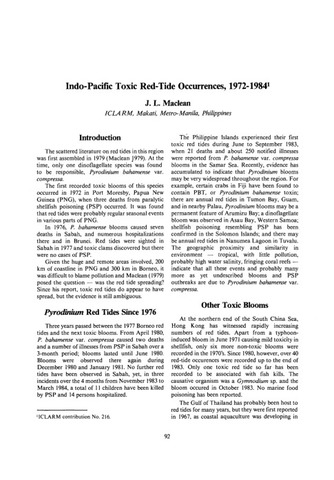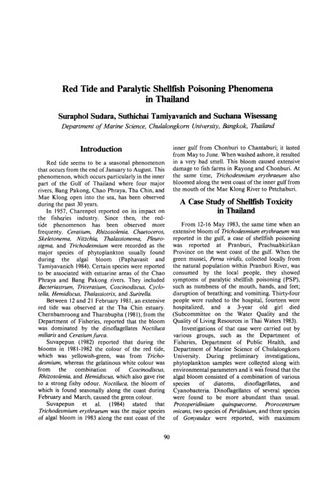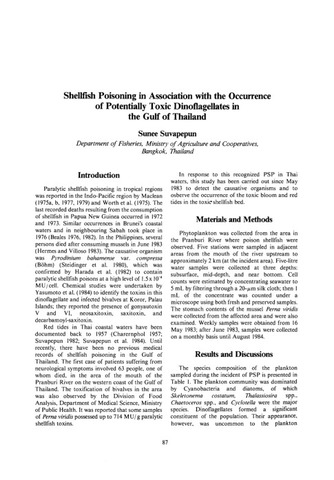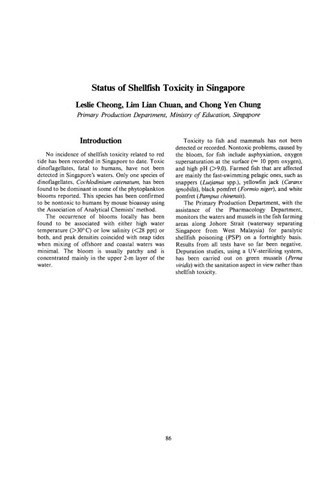03 Technical Publications and Reports on Fish Handling and Post-harvest Practices: Recent submissions
Ipinapakita ngayon ang mga item 141-160 ng 247
-
Development of minced fish industry in Thailand
(Marine Fisheries Research Department, Southeast Asian Fisheries Development Center, 1988)Development in minced fish technology in Thailand has involved the improvement of machinery to replace manpower, the development of new processing techniques and the improved utilization of underutilized species. Socio-economic ... -
Utilization of trawl by-catch for the development of surimi and surimi-based products (1979-1987)
(Marine Fisheries Research Department, Southeast Asian Fisheries Development Center, 1988)Details are given of research activities conducted by the Marine Fisheries Research Department of Singapore regarding the use of small demersal fish (trawling by-catch) for the production of comminuted products. The ... -
A case history of fish jelly product development in Sarawak, Malaysia
(Marine Fisheries Research Department, Southeast Asian Fisheries Development Center, 1988)The development of fish jelly processing in Sarawak, Malaysia, a technique first introduced in 1984, is discussed. Socio-economic factors affecting the development of the industry are examined, considering attitudes, ... -
Cryoprotective effects of chemicals on proteins of fish muscle
(Marine Fisheries Research Department, Southeast Asian Fisheries Development Center, 1988)A review is made of studies conducted on cryoprotectants for use in the frozen storage of processed fishery products, such as surimi. Some 150 compounds were screened for cryoprotective effects on fish actomyosin; the ... -
General introduction to marine processed products in Japan
(Marine Fisheries Research Department, Southeast Asian Fisheries Development Center, 1988)The marine fishery catch for Japan in 1984 was over 12 million tonnes; the sardine catch was high, although Alaska pollack showed a decrease. A brief account is given of imports and export, both worldwide and for Japan, ... -
Utilization and post-harvest technology of sardine, in relation to nutrition and health
(Marine Fisheries Research Department, Southeast Asian Fisheries Development Center, 1988)Fish consumption in Japan is very high compared with other countries; it is approximately 96 g daily per capita and provides a good balance of protein, fats and oils, and carbohydrates. The largest component of the fish ... -
Overview of current fish consumption and fish processing in Southeast Asia
(Marine Fisheries Research Department, Southeast Asian Fisheries Development Center, 1988)Following a brief account of the food fish supply in the Southeast Asian region, details are given of per capita fish consumption in the following countries: Brunei, Indonesia, Malaysia, Philippines, Singapore and Thailand. ... -
Improvement in fisheries post-harvest technology in Thailand
(Marine Fisheries Research Department, Southeast Asian Fisheries Development Center, 1988)Following a brief account of the fishery industry of Thailand, describing the fishery resources and the utilization of the fish landed, details are given of the fish processing sector. Cold storage and freezing facilities, ... -
Fish processing in Singapore
(Marine Fisheries Research Department, Southeast Asian Fisheries Development Center, 1988)An account is given of the fish processing industry in Singapore, which produces 4 major groups of fish products, namely frozen fish products, fish jelly products, snack food and seafood delicacies. Problems faced by the ... -
The fish processing industry in the Philippines: Status, problems and prospects
(Marine Fisheries Research Department, Southeast Asian Fisheries Development Center, 1988)An account is given of the fish processing industry of the Philippines. The various existing post-harvest technologies are described, considering fresh fish handling practices, fish processing technologies, new fish ... -
Problems of post-harvest technology in Southeast Asia
(Marine Fisheries Research Department, Southeast Asian Fisheries Development Center, 1988)Improvement of post-harvest technology in Southeast Asian countries and the various problems involved are discussed, considering the following topics: fresh fish handling; traditional products; fish products for export; ... -
Present status of fish processing activities in Malaysia
(Marine Fisheries Research Department, Southeast Asian Fisheries Development Center, 1988)An account is given of the fish processing industry of Malaysia; products consist of dried fish, fish crackers, shrimp past, fermented fish, fish satay, canned tuna/sardine, frozen prawn/fish/squid, and fish meal. Problems ... -
Development of fish products in Indonesia
(Marine Fisheries Research Department, Southeast Asian Fisheries Development Center, 1988)Details are given of the various processing methods used for fish landed in Indonesia. Data for the period 1983-85 indicate curing to be the most popular method, in particular dry salted and boiled fish. Problems involved ... -
Toxic red tides and shellfish toxicity in southeast Asia: Proceedings of a consultative meeting held in Singapore 11-14 September 1984
(Marine Fisheries Research Department, Southeast Asian Fisheries Development Center; International Development Research Centre, 1984)The occurrence of toxic red tides and paralytic shellfish poisoning (PSP) have become more frequent in Southeast Asian waters in recent years. A consultative meeting was organised by the Southeast Asian Fisheries Development ... -
A summary of paralytic shellfish poisoning in Canada
(Marine Fisheries Research Department, Southeast Asian Fisheries Development Center; International Development Research Centre, 1984)Paralytic shellfish poisoning occurs along both the east and west coasts of Canada. Since 1973 there have been more than 300 documented cases of paralytic shellfish poisoning, resulting in about 35 deaths. Causative ... -
Shellfish poisoning in Japanese waters
(Marine Fisheries Research Department, Southeast Asian Fisheries Development Center; International Development Research Centre, 1984)Under the supervision of the Fisheries Agency, each prefectural government has the responsibility of carrying out monitoring programs. Although some problems exist, monitoring operations have been proceeding successfully. ... -
Indo-Pacific toxic red-tide occurrences, 1972-1984
(Marine Fisheries Research Department, Southeast Asian Fisheries Development Center; International Development Research Centre, 1984)A brief review is made of the incidences of red tides and paralytic shellfish poisoning in the Indo-Pacific region during the period 1972-84, indicating the organisms involved in the toxicity. -
Red tide and paralytic shellfish poisoning phenomena in Thailand
(Marine Fisheries Research Department, Southeast Asian Fisheries Development Center; International Development Research Centre, 1984)A report is made of the first incidence occurring of paralytic shellfish poisoning in Thailand in May 1983, following an extensive bloom of Trichodesmium erythraeum. Investigations undertaken regarding the source of the ... -
Shellfish poisoning in association with the occurrence of potentially toxic dinoflagellates in the Gulf of Thailand
(Marine Fisheries Research Department, Southeast Asian Fisheries Development Center; International Development Research Centre, 1984)A study was conducted to detect the causative organisms of paralytic shellfish poisoning in Thailand waters and to observe the occurrence of the toxic bloom and red tides in the toxic shellfish beds. -
Status of shellfish toxicity in Singapore
(Marine Fisheries Research Department, Southeast Asian Fisheries Development Center; International Development Research Centre, 1984)No incidence of shellfish toxicity related to red tides has been recorded in Singapore to date. Only one species of dinoflagellate, Cochlodinium catenatum, has been found dominant in some of the phytoplankton blooms reported. ...

